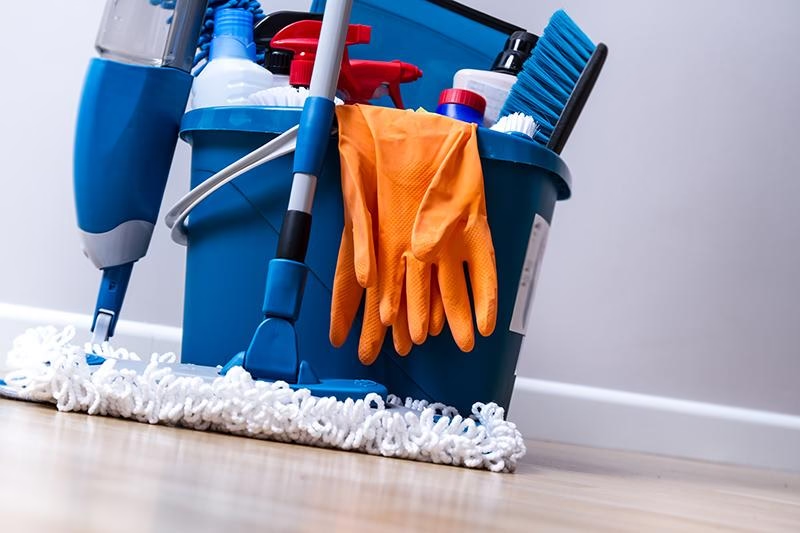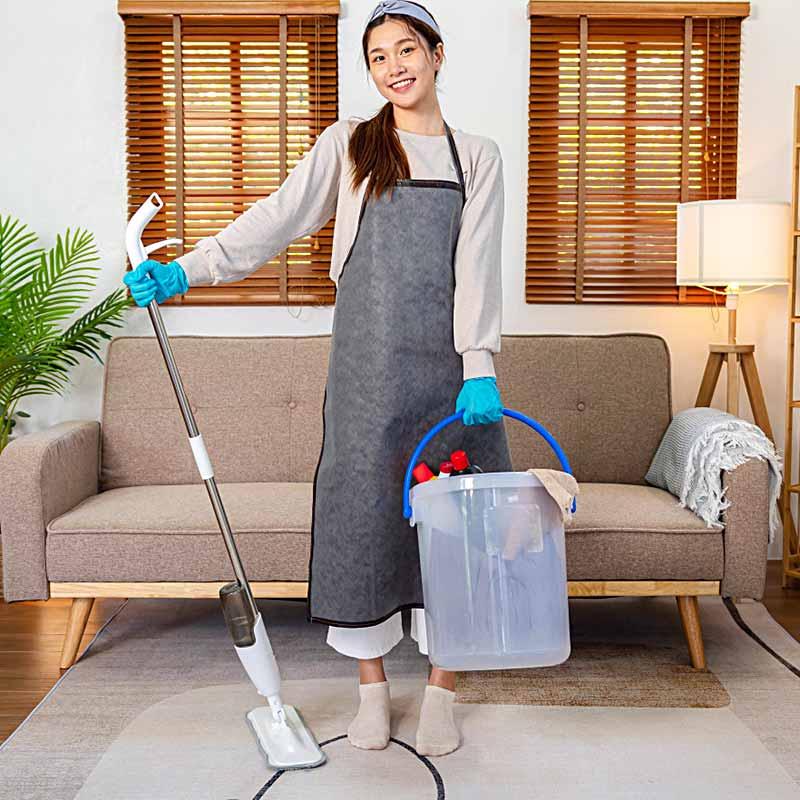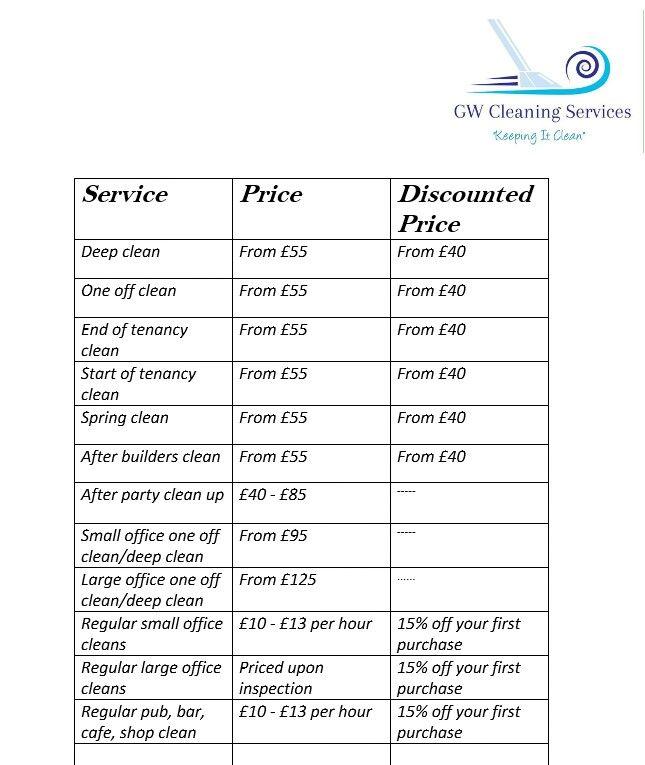
From Victorian terraces in Leeds to glass-fronted flats in London Docklands, the weekly clean has quietly evolved from a household chore into a professional service woven into everyday British life. Today’s domestic cleaning market in the UK spans lone traders with loyal neighbourhood routes, franchised teams in branded cars, and slick app-based platforms promising next-day availability. Behind the marketing gloss sit practical questions most households share: what’s included, who supplies the products, how pricing works, and how to trust someone with your keys.
This article explores the landscape without hype. We’ll outline the common types of services-from regular weekly or fortnightly cleans to deep, post-build and end-of-tenancy work-and what typically falls inside or outside scope. We’ll look at how providers are vetted and insured, how cancellations and minimum hours are handled, and why extras like oven or carpet cleaning are priced differently. You’ll find guidance on regional price variations, eco-friendly options, and the difference between hiring a self-employed cleaner and booking through an agency or platform.
Whether you’re seeking a light-touch spruce-up or a meticulous reset, understanding the norms, language and expectations of domestic cleaning in the UK will help you set a realistic brief, compare quotes fairly, and establish a working arrangement that is tidy in more than one sense.
Table of Contents
- The real scope of a standard UK domestic clean and the add ons worth paying for
- Hourly versus fixed rate pricing with the questions that reveal total cost and value
- Smart vetting of cleaners and agencies with DBS checks insurance and safety practices
- Greener and allergy considerate cleaning with recommended products methods and schedules
- Key Takeaways
The real scope of a standard UK domestic clean and the add ons worth paying for
Think of a routine visit as a maintenance clean-a swift reset that keeps your home presentable between deeper jobs. Expect pros to focus on high-traffic areas and visible touchpoints: tidy surfaces, fresh floors, and sparkling sinks. It’s thorough without being forensic, and it’s designed for consistency, not renovation. In most homes, that means kitchens and bathrooms get the lion’s share of attention, while bedrooms and living spaces are freshened and reset for calm and clarity.
- Commonly included: dusting reachable surfaces; vacuuming and mopping; wiping kitchen counters, hob exterior, cupboard fronts; sink and tap polish; bathroom sanitising (toilet, basin, shower/tub), mirrors; bins emptied; quick spot-wipes on doors and light switches; bed straightening; a light once-over on skirting where needed.
- Usually excluded or by request: oven and extractor deep-clean; inside fridge/freezer and kitchen cupboards; internal window panes/frames and patio doors detail; heavy limescale removal and grout revivals; blinds, radiators, and high-level dusting; carpet/upholstery shampoo; behind-large-appliance pulls; post-builders or end-of-tenancy tasks. In short: it’s not a deep clean-but it keeps your week running smoothly.
When you want a visible step-up, a few targeted extras deliver the biggest glow-up per minute. Choose impact areas that change how a space feels (glass, grout, ovens) or health-first upgrades that lift allergens and tackle hidden grime. Rotate them through the year for a home that stays photo-ready without ballooning your budget or schedule.
| Add‑on | Best frequency | Why it’s worth it | Typical time |
|---|---|---|---|
| Oven & extractor deep‑clean | 2-3 times/year | Restores shine, reduces odours, cooks more evenly | 60-120 min |
| Fridge/freezer interior | Monthly-quarterly | Hygiene boost, cuts food smells, easy inventory | 30-60 min |
| Internal windows & frames | Quarterly | More light, fewer streaks, sharper overall look | 30-90 min |
| Shower screen descaling | Monthly | Beats limescale, keeps glass crystal‑clear | 20-40 min |
| Grout & tile refresh | Biannually | Brightens bathrooms/kitchens, slows mould | 45-90 min |
| Carpet/upholstery steam | Annually | Allergen reduction, fibres revived | 90-180 min |
| Blinds, radiators, skirting detail | Seasonally | Dust hotspots tackled, sharper finishes | 30-60 min |
Hourly versus fixed rate pricing with the questions that reveal total cost and value
Time-based billing gives you control over scope in the moment, while job-based pricing sells you a defined result. In the UK, the right choice hinges on your priorities: transparency versus predictability, flexibility versus outcomes. If a two-bed flat needs sparkle for a move-out, outcome-led pricing can lock in what “clean” means; for weekly refreshes, hours can flex with your routine. Always translate quotes into a like‑for‑like comparison-factor in travel, supplies, VAT, and any speciality tasks-so the “cheapest” option doesn’t become the most costly once the mop meets the floor.
| Model | How it’s billed | Pros | Watch‑outs | Best for |
|---|---|---|---|---|
| Hourly | £ per hour, per cleaner | Flexible, easy to scale | Speed varies; scope creep | Regular upkeep |
| Fixed | £ per job/space | Outcome-based, predictable | Caps on scope; extras add up | Deep/end-of-tenancy |
To reveal true cost and value, interrogate the details behind the number. You’re not just buying minutes-you’re buying a result, a process, and a guarantee. Convert every quote into an estimated total by multiplying realistic time on site by the full hourly equivalent (including any add‑ons) or, for fixed quotes, by mapping what’s included to your actual needs so your home gets the finish you expect without surprise fees.
- What’s included by default (bathrooms, kitchen, inside oven/fridge, limescale, skirting, high dusting)?
- Who provides supplies and is eco-friendly kit an extra?
- Team size and typical hours on site for your home type (e.g., 2‑bed/1‑bath)?
- Minimum booking time, travel/parking, and congestion fees?
- Is VAT included in the headline price and are there bank holiday premiums?
- Scope limits (e.g., mould, biohazards) and add‑on rates for oven, carpets, blinds?
- Quality guarantee, re‑clean window, and what counts as a snag?
- Cancellation/reschedule policy and notice periods?
- Key holding, security checks, and pet‑friendly procedures?
Smart vetting of cleaners and agencies with DBS checks insurance and safety practices
In the UK, genuine peace of mind begins with transparent pre-screening. Ask for a current DBS certificate (and whether they use the Update Service), evidence of public liability insurance (ideally £1-5m), and simple, written risk assessments for typical tasks. Reliable providers will also share COSHH and PPE training proof, a clear key-holding policy, and how they safeguard data under UK GDPR. Consistency matters: confirm who actually attends your home, how substitutions are handled, and whether supervisors perform spot checks to maintain standards.
- Identity & right-to-work: photo ID and eligibility verified.
- DBS level: Basic for most homes; Enhanced if supporting vulnerable occupants.
- Insurance: public and employer’s liability; accidental damage included.
- Training: COSHH, safe use of products, lone-working procedures.
- Security: signed key-holding form; alarm and access logs.
- Quality assurance: references, audit routine, complaints resolution.
| Check | What to ask | Why it matters |
|---|---|---|
| DBS | Level + issue date/Update Service | Trust in home settings |
| Insurance | Limit, insurer, exclusions | Covers damage/injury |
| Training | COSHH & PPE certificates | Safe chemical handling |
| References | 2 recent clients | Proves reliability |
| Supervision | Spot checks, audits | Consistent standards |
| Security | Key policy, access logs | Protects property |
Before booking, request digital copies of core documents, note renewal dates, and confirm emergency contact procedures. Ask which eco or pet-safe products are used, whether patch testing is done on delicate surfaces, and how incidents are recorded under RIDDOR when applicable. Clarify arrival time windows, substitution rules if your regular cleaner is off, and the satisfaction guarantee or re-clean policy-small details that turn a tidy house into a professionally safeguarded home.
Greener and allergy considerate cleaning with recommended products methods and schedules
Choose products that clean effectively without stirring up symptoms or leaving a heavy footprint. Look for fragrance‑free, dye‑free, low‑VOC options, ideally carrying the Allergy UK Seal of Approval or EU Ecolabel. Prioritise tools over chemicals: a sealed HEPA 13 vacuum to trap fine dust, tight‑weave microfibre cloths that capture allergens with water alone, and a steam mop for hygienic hard floors (always check surface suitability). For everyday mess, simple staples-bicarbonate of soda, castile soap, and citric acid-often outperform harsher formulas; reserve stronger solutions for targeted jobs.
Technique matters as much as the bottle. Use damp dusting to prevent particles going airborne, vacuum slowly in overlapping passes, and ventilate after cleaning; on high‑pollen days, air out briefly or use an extractor/air purifier. Wash bedding at 60°C where care labels allow, encase pillows/mattresses, and keep humidity in the 40-50% range to discourage dust mites. In hard‑water areas across the UK, tackle limescale little and often with citric acid or vinegar (avoid on natural stone), and favour refillable concentrates to cut plastic and cupboard clutter.
- HEPA 13 vacuum (sealed body): traps fine dust, dander, pollen.
- Unscented laundry liquid: gentle on skin, effective at 60°C cycles.
- Microfibre cloth kit: glass, general, and floor pads-just add water.
- Bicarbonate of soda: odour lift, soft‑scrub for sinks and ovens.
- Castile soap: multi‑surface cleaner; pair with warm water.
- Citric acid: kettle/bathroom descaler; rinse well after use.
- Enzyme cleaner: targeted for food, pet and protein stains.
- Steam mop: hygienic hard‑floor refresh without added chemicals.
- Refill concentrates + glass bottles: reduce waste and storage.
| Frequency | Area | Method | Products |
|---|---|---|---|
| Daily | Kitchen & handles | Damp wipe, air out | Microfibre + castile soap |
| Weekly | Bedrooms & lounges | Slow HEPA vacuum, damp dust | HEPA vacuum, microfibre |
| Fortnightly | Bathroom | Descale, rinse, dry | Citric acid solution |
| Monthly | Bedding & soft furnishings | Wash at 60°C (labels), steam/air | Unscented detergent, steam |
| Seasonal | Allergy prep | Filter change, entry mats refresh | Vacuum filters, bicarb shake‑out |
Key Takeaways
As the dust settles, one thing is clear: domestic cleaning services in the UK are less about a mop and bucket, and more about fitting neatly around how people live. From one-off deep cleans to fortnightly refreshes, eco-friendly options to end-of-tenancy standards, there’s a service to match most homes, rhythms, and budgets. What tends to matter most is transparent pricing, clear scope, proper insurance, DBS-checked staff, and realistic timings for quality work.
The right fit may look different in a London flat than in a rural cottage, but the essentials hold steady: align expectations, agree what “clean” includes, and value continuity as much as convenience. As the market keeps evolving-smarter booking, greener products, tighter standards-the aim remains simple.
Choose well, and your home won’t just be cleaner; your week will feel a little clearer too.





